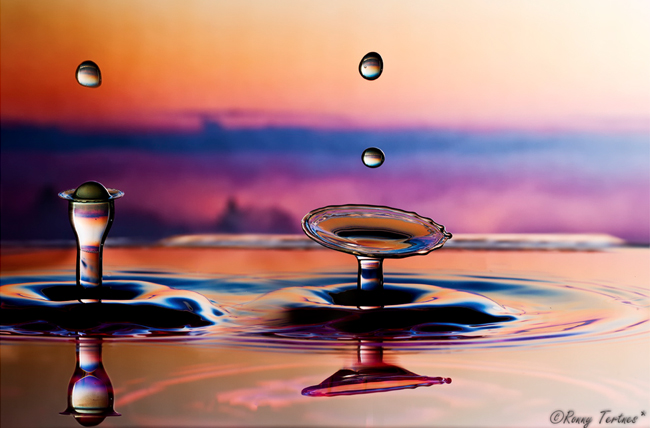
The slow dripping of water as it hits the bottom of a coffee pot. The leaky sink that drips all night long when you’re battling another night of insomnia. It happens in a millisecond, where one drop of liquid hits another pool of liquid, you can see it splash in your mind’s eye. Norweigan photographer, Ronny Tertnes has set about to capture them and manipulate each droplet into a masterpiece. Using ultra high speed photography, flash rigs, smoke and different types of liquids, this IT administrator by day creates what looks like blown glass with Earth’s most basic element. In this article, we’ll give you some high speed photography tips and show you some inspiration from Tertnes’ work.
This article was originally written in 2014 and updated in 2022.
High Speed Photography Tips

To get started, here are basic tips for high speed photography.
- Use a fast shutter speed to freeze motion – This usually means a rate of 1/500th and above, but the actual number depends on the speed of your moving subject, whether flash is used or not and other factors.
- Use Flash – Flash photography helps freeze the action. Introducing it to your scene will help you freeze the motion in the water. For more information, see this article on Flash Duration. In addition, flash can also add directional light and dimension to your photograph.
- Experiment with colors and gels – Study and use color theory to add to the interest of your photo. Mixing the right colors with gels on your flashes and background colors can create beautiful and interesting results.
High Speed Photography Examples
Using a Canon 7D and Canon 100mm Macro, Tertnes manipulates the liquids almost like a sculpture with a malable piece of clay. The images you see here are done mostly in camera, with some Photoshop work done in post.
Water is mixed with various substances to give it some texture, color, and movement and Tertnes freezes his image just as the drop is hitting the pools of liquid to create dancing abstract water art. I’d imagine this process takes much patience, many trials and errors to get the shapes to conform to your vision, and much experimentation.
In some of the images, you begin to “see” and associate recognizable structures or shapes, much as laying on the ground and looking at the sky, seeing pictures made by the clouds.








You can see more of Ronny Tertnes’ work on his 500px page here.
CREDITS: All photographs by Ronny Tertnes are copyrighted and have been used with permission for SLR Lounge. Do not copy, modify or re-post this article or images without express permission from SLR Lounge and the artist.




Get Connected!